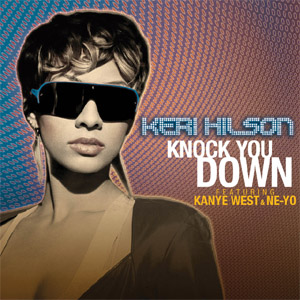
Inspired by the season and the December 5 birthdays of Little Richard, Keri Hilson, J.J. Cale, Andy Kim, Michel’le and Pamela Blair.

Inspired by the season and the December 5 birthdays of Little Richard, Keri Hilson, J.J. Cale, Andy Kim, Michel’le and Pamela Blair.
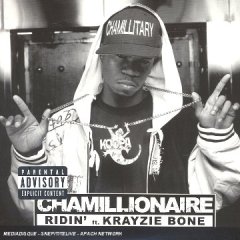
Inspired by the season and the November 28 birthdays of Randy Newman, En Vogue/Lucy Pearl’s Dawn Robinson, The 5 Royales’ Johnny Tanner, The Fleetwoods’ Gary Troxel, Chamillionaire, R.B. Greaves, William DeVaughn, Bruce Channel, The Foundations’ Clem Curtis and Motown founder Berry Gordy Jr.
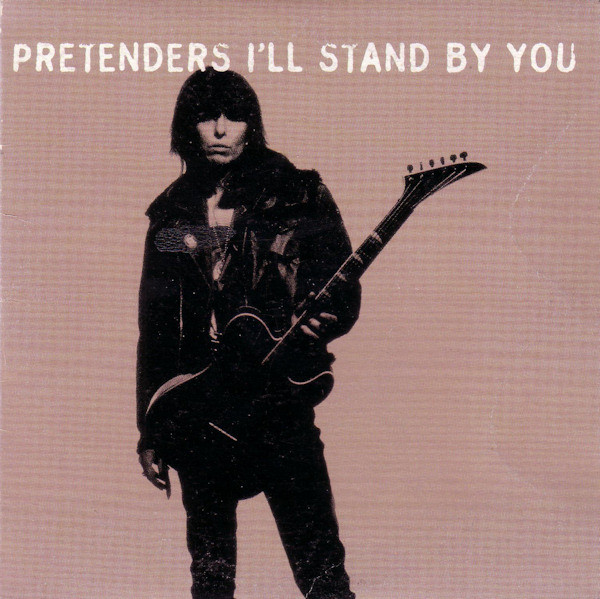
Inspired by the September 7 birthdays of Pretenders‘ Chrissie Hynde, Buddy Holly, Chic‘s Alfa Anderson, Gloria Gaynor, Air’s Jean-Benoît Dunckel, N.W.A.’s Eazy-E, Jermaine Stewart, Owen Pallett and Starland Vocal Band’s Margot Chapman.
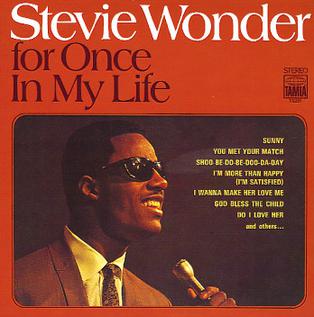
Inspired by the May 13 birthdays of Stevie Wonder, Alison Goldfrapp, Mary Wells, Ritchie Valens and Bea Arthur.

Inspired by the April 9 birthdays of Tom Lehrer, Carl Perkins, My Chemical Romance’s Gerard Way, Jazmine Sullivan, Lil Nas X, Paul Robeson and Paper Lace’s Phil Wright.
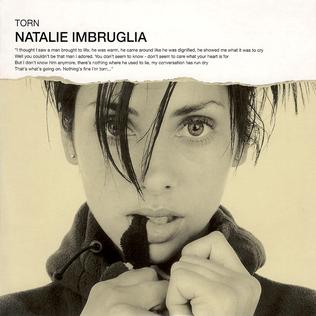
Inspired by the February 4 birthdays of Alice Cooper, Cam’ron, James’ Tim Booth, and Natalie Imbruglia; the February 3 birthdays of The Temptations’ Dennis Edwards, The Kinks’ Dave Davies, Melanie, and Daddy Yankee; and the February 2 birthdays of Graham Nash, Honey Cone’s Edna Wright, Shakira, Howard Bellamy and Stan Getz; and the February 3 anniversary of the passing of Buddy Holly.
Click here to like Tunes du Jour on Facebook.
Follow me on Twitter.
Follow me on Instagram.
Nineteen fifty-seven was a banner year in the nascent days of rock and roll.
Buddy Holly and the Crickets had their first chart hit with “That’ll be the Day,” which hit #1 in September. “Peggy Sue” became their second top ten single before the year was out.
Sun Records, the label that brought us Elvis Presley (among others), released “Whole Lotta Shakin’ Going On,” performed by Jerry Lee Lewis. It became Lewis’ first hit single, peaking at #3.
Gospel singer Sam Cooke released his first secular recording on Keen Records. The song was “You Send Me,” and it spent three weeks at #1 in December. Cooke would go on to score 28 more top 40 pop hits.
The Everly Brothers cracked the pop chart for the first time with “Bye Bye Love,” which peaked at #2. Their follow-up single, “Wake Up Little Susie,” went to #1 and stayed there for four weeks.
Chuck Berry, who cracked the pop top ten in 1955 with “Maybellene,” had two more top ten hits in 1957 – “School Day” and “Rock & Roll Music.” He wouldn’t have a #1 single until 1972.
Elvis Presley was at #1 on the pop singles chart for exactly half the year with “All Shook Up,” “Jailhouse Rock,” “(Let Me Be Your) Teddy Bear,” and “Too Much.” So his increasing amount of fans wouldn’t be bothersome to his neighbors and to have more security, in 1957 Presley purchased the Graceland mansion in Memphis for $102,500.
Jackie Wilson, formerly a member of Billy Ward and His Dominoes, released his first solo single, “Reet Petite (The Finest Girl You Ever Want to Meet),” co-written by an up-and-coming songwriter named Berry Gordy, Jr. Though the song only reached #62 on the US pop chart, it went top ten in the UK, earning Gordy enough money to fund the launch of Motown Records. Ultimately, Wilson would have 24 top 40 hits on the US pop chart.
Little Richard, who first cracked the pop chart in 1956 with “Tutti-Frutti,” had three more top 40 hits in 1957 – “Keep a Knockin’,” “Jenny, Jenny” and “Lucille.” The latter hit #1 on the r&b chart, while the other two titles peaked at #2 r&b.
The Coasters teamed up with the production/songwriting team of Jerry Leiber and Mike Stoller and in doing so, scored with the double-sided hit single “Searchin’” (#3 pop / #1 r&b) and “Young Blood” (#8 pop / #1 r&b). With Lieber and Stoller The Coasters would score several more top ten hits over the next few years.
Also, in 1957, the television program American Bandstand was syndicated nationally. It would air for the next 32 years.
Tunes du Jour’s Throwback Thursday playlist this week focuses on the great music of 1957.
Click here to like Tunes du Jour on Facebook.
Follow me on Twitter: @TunesDuJour.
On March 28, 1958, 19-year-old Eddie Cochran recorded a song he co-wrote with his manager, Jerry Capeheart, called “Summertime Blues.” It was intended to be the b-side of a single whose a-side, “Love Again,” was written by 17-year-old Sharon Steely, who soon became Cochran’s girlfriend. Liberty Records released the 45 with “Summertime Blues” as the a-side. Five months after he recorded it, Cochran had his first U.S. top ten single. In the fall of 1958, the record became a hit in England.
Besides singing and co-writing the song, Cochran produced it. His talents didn’t stop there. He could play piano, drums, bass and guitar, the latter of which he played on records by two dozen other acts.
Cochran’s popularity overseas led to a hugely successful tour of England in the spring of 1960, culminating on April 16 with a performance at the Hippodrome Theater in Bristol. On his way to the airport after the show, Cochran got into a cab with Steely, who was now his fiancée, his tour manager, Patrick Thompkins, and fellow performer Gene Vincent. The taxi driver was speeding on a dark and winding street. The car blew a tire and the driver lost control of the vehicle, crashing it into a lamppost. Cochran put himself over his fiancée to protect her and ended up being thrown from the car. Suffering a severe head injury, he was brought to the hospital. The following afternoon he was pronounced dead. He was just 21 years old.
Eddie Cochran’s time with us was far too short, but his legacy lives on. “Summertime Blues” is an undeniable rock and roll classic, covered by many artists of different genres, including The Who, Alan Jackson, Blue Cheer, The Beach Boys, Joan Jett and the Blackhearts, and Olivia Newton-John. Cochran’s “C’mon Everybody” was later recorded by Sex Pistols, and his “Twenty Flight Rock” was played by a teenage Paul McCartney at his audition for a teenage John Lennon to let McCartney join Lennon’s band, The Quarreymen.
Today is Throwback Thursday, and Tunes du Jour revisits some of the hits of 1958, kicking off with Eddie Cochran’s “Summertime Blues.”
Click here to like Tunes du Jour on Facebook.
Follow me on Twitter: @TunesDuJour
Today’s playlist consists of twenty hits from 1959, when the pop charts were one big sausage fest.
Click here to like Tunes du Jour on Facebook!
Follow me on Twitter: @TunesDuJour
When all words fail, she speaks / Her mix tape’s a masterpiece
– Ben Folds, “Kate”
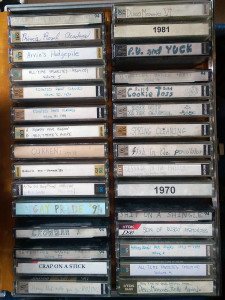
The precursor to this blog was mix tapes. In high school I made mix tapes every day to get us through the 45 minute bus ride to school. For friends I made mix tapes of songs I thought they should know. After I graduated college and started a job, I made mix tapes to get through the work day. As I didn’t have my own office for several years, I aimed to make compilations that would have broad appeal, so my coworkers could enjoy them as well. It’s hard to please everyone. Try as I might, I could not get Karla to enjoy the tunes I included. She thought Whitesnake were the greatest group in creation, so how could I expect her to like music that was good?
In his book Love is a Mix Tape, Rob Sheffield writes that there is always a reason to make a mix tape. He provides the following categories:
The Party Tape
I Want You
We’re Doing It? Awesome!
You Like Music, I Like Music, I Can Tell We’re Going to be Friends
You Broke My Heart and Made Me Cray and Here Are Twenty or Thirty Songs About It
The Road Trip
No Hard Feelings, Babe
I Hate This Fucking Job
The Radio Tape
The Walking Tape
And the drug tape, the commute tape, the dishes tape, the shower tape, the collection of good songs from bad albums you never want to play again, the greatest hots of your significant other’s record pile, the night before you break up.
I love mix tapes. I love to categorize music. Not by genre. I miss the old days of top 40 radio when Led Zeppelin and the Carpenters were played on the same station. I love to find connections between songs that nobody else would have thought to put together.
There’s an art to making a good mix tape. I have my rules – open with an uptempo song, don’t clump all the best known songs together, mix in lesser-known tracks with the more famous ones.
This blog is my mix tape outlet for the 2000s. Here I usually focus the playlists on single artists (meaning playlists of one artist, not unmarried artists, though maybe I’ll make a mix tape of the latter). The art of a single-artist mix tape differs from that of a various artists collection. For that matter, the methodology varies from artist to artist.
When I created a Buddy Holly playlist last week, it wasn’t difficult to decide what songs to include. The man had a short career, so it was pretty obvious which twenty songs would comprise the compilation. The Michael Jackson playlist I created just over a week before than was more challenging. The man had so many hits and other great tracks that were not hits. In that case, I figured whoever would be listening knows Thriller inside and out, so I focused on his other releases. I chose songs that were hits but since forgotten, songs that were not hits but have held up great over time, and mixed them with the best-known songs from his teenage and pre-teen years. I approach each artist differently.
Part of the challenge of creating a good mix is I don’t know exactly who my audience is for the blog. For example, being today is Ben Folds’ birthday, I made a Ben Folds mix. Who is going to listen to it? Is it the Ben Folds fan? Is it the person who knows Folds from his only crossover hit, “Brick?” Is it the person who has never heard of Folds, but gives the playlist I listen because they trust my recommendation?
I don’t know, so I created a playlist in which my favorite Folds album tracks hang out with many of the fun cover versions he has released digitally between albums. I usually don’t include so many covers in a playlist of a singer/songwriter. In Folds’ case, he approaches covers in different ways. Some are faithful to the original, as when he performs Elton John’s “Tiny Dancer” of Jackson Browne’s “Doctor My Eyes.” Some are radically different than the original versions, a la his covers of the Flaming Lips’ “She Don’t Use Jelly” or Dr. Dre’s “Bitches Ain’t Shit.” Though covers, the ones in the latter category reveal his artistry as much as his originals do.
In honor of Ben Folds’ 49th birthday, here is a Ben Folds mix tape.
Click here to like Tunes du Jour on Facebook!
Follow me on Twitter: @TunesDuJour